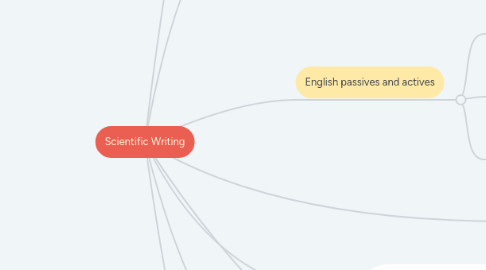Scientific Writing
by Adrián Serrano


1. Intransitive verbscan’t use passive
2. It lets the facts stand on their own
3. Presents an ‘air’ (or feeling) of logic
4. Tenses and concordance
4.1. Tenses
4.1.1. Past
4.1.1.1. Used mainly in the Methodology and Results sections
4.1.2. Present
4.1.2.1. Accepted facts, results discussions and conclusions
4.1.3. Future
4.1.3.1. Used to describe things that may happen in the future
4.2. Concordance
4.2.1. Subject and verb concordance
4.2.1.1. Number
5. The article and the noun and adjectivation
5.1. Singular/Plural
5.2. Definite/Indefinite
5.3. Countable/Uncountable
5.4. Proper nouns
5.5. Adjectivation
6. English passives and actives
6.1. Forming the passive
6.1.1. BE + PAST PARTICIPLE
6.2. Using the passive
6.2.1. Use the passive when the subject is acted upon
6.2.2. Use the active voicewhen the subject is the actor
6.3. Why passive voice?
6.3.1. Removes some accusations of bia
